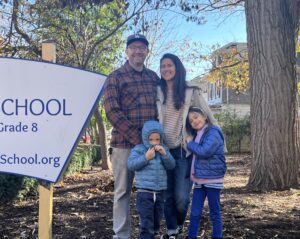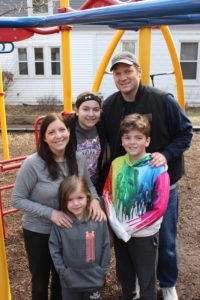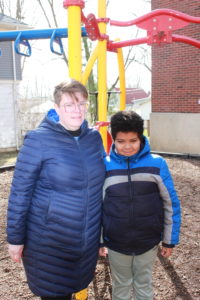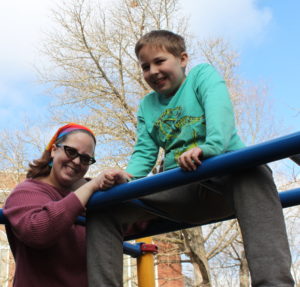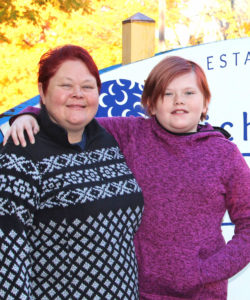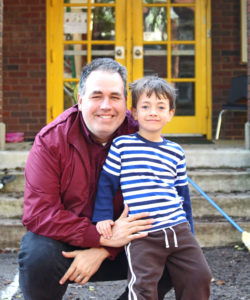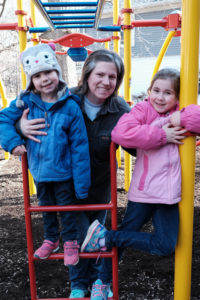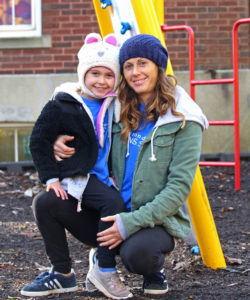As students enter the 5th and 6th grade class at Richmond Friends School they continue to learn through individual exploration, small group interactions, and entire class activities. It is important for each of these forums to be utilized since each contributes something different to the full development of the child. Individual study allows a student to specialize the educational process to themselves, helps create personal excitement for learning, and allows for individual expression. Small group study allows students to work together towards a collective goal, provides an opportunity to strengthen social skills, and provides for students to help each other. Entire class activities allow for the inclusion of many different points of view or personal knowledge, provides a place for each child to be heard by everyone else, and allows for the building of a stronger classroom community.
The primary means for students to follow individual study is through personal projects. Students begin to learn about areas of personal interest for extended periods of time to create projects that help to educate the entire class. Students are encouraged and guided to apply what they learn to create learning aids, called products, for the rest of the class, which is usually introduced to the entire class during a formal presentation. Occasionally the entire class will study a single topic with each student specializing in one aspect of that topic. At other times, individual students, with teacher guidance, will focus on learning about topics that are completely of their own interest.
Small groups are used in several ways in the 5th to 6th grade classroom. They are the primary means for math instruction and are also sometimes used in science experiments and writing activities. In math and science experiments, it is often beneficial for students to help each other in going through the process to arrive at a conclusion or answer. The sharing of different points of view is what makes small groups so valuable to the writing process. Students can use each other to check their writing drafts for interesting and detailed content as well as grammatical proficiency and correct spelling.
There are many learning activities that the entire class embarks upon together. Physical Education is decided upon by all the students together through consensus, which requires that everyone agree on what the class will do for the week. Field trips are often taken by the entire class to ensure that everyone in the class can share some meaningful experience and to help build a bond between the students. Often brainstorming is done by the entire class so that many different voices, opinions, and thoughts can be brought to bear on a particular subject.
Language Arts:
Listening, speaking, reading, and writing are the foundation of the language arts curriculum in the 5th and 6th grade classroom. Nearly all classwork encompasses all four of these parts of language arts, whether that work be whole-class or small-group instruction, cooperative learning exercises, or individual work.
*Reading:
decoding words
fluency
vocabulary building
comprehension
personal enjoyment
researching
*Writing:
understanding and utilizing the writing process
writing conventions, like punctuation and capitalization
spelling
organization into paragraphs and sentences
creating and exploring different genres
handwriting: both printing and cursive
*Oral communication:
comprehensibility
expression
self-confidence
Math: Like so many other areas of learning, people often learn math best in different ways or at different ages. With that limitation, the 5th to 6th grade class utilizes age and grade independent math groups. These groups are malleable to allow for, depending on the math topic under consideration and the guidance of the teacher, a student to go from one group to another. Whole class math activities, like a baseball card activity in the spring and weekly statistics, also provide opportunities to establish basic math skills for all the students. While the same standards of minimum expectations apply to all students, math in the 5th and 6th grade classroom is individuated in ways that best reach each student’s learning needs.
*Geometry:
shapes
calculating area and volume
*Measurement (metric and English):
length
mass
volume
time
*Computations:
multiplication and division
subtraction and addition
*Number Sense:
fractions
decimal numbers
percentages
rounding
*Problem Solving:
understanding a written problem
choosing the correct method to solve a problem
algebra
graphing
Science: Science is not just the study of scientific information but also a process for answering questions. It is important to understand that process and use it to answer one’s own questions with a probable answer. Learning the scientific process, using it through experimentation, and gaining knowledge on scientific subjects are all important aspects of a sound science curriculum. Whole class or group lessons delve into scientific topics like the water cycle or rock cycle, and may also provide background scientific knowledge. In addition, much of the learning concerning many scientific areas of study are guided through individual projects.
*Scientific Processes:
comprehension of scientific method
experiments
personal use for answering questions
classification
*Scientific Areas of Interest:
recycling
water cycle
environment and human impact
animals
plants
minerals
energy
motion
human body and nutrition
Social Studies: Social studies concerns learning about our community, our society and others in the world, and what has already happened in those societies. Much like science, social studies utilize some small group and all class activities. Some examples include the teacher reading a book to the class concerning the underground railroad, or small groups making a map to illustrate where the main branches of the underground railroad were. Also, much of the study of history and the world is provided through individual projects. With a strong focus on research, the social studies curriculum includes focus on both library book research and the use of technology to find source documents.
*History:
United States government
European colonialization
ancient civilizations
Native Americans
United States history
*Geography:
location of states and countries
map familiarity and ability to use
*Cultures:
world religions
similarities and differences between people
desire to strive for peace
*Technology:
research skills
computer use, including programs and applications
safe and appropriate internet usage
digital communication
Art: Art education in the 5th to 6th grade class includes art appreciation, attempting to gain an insight into different forms of art, as well as participation in different types of art and personal exploration into art. Creating art is a personal expression, and therefore every artistic endeavor is greeted with honest encouragement. Do-exactly-what-I-do type of art activities are not encouraged. We explore activities that allow for everyone to express themselves differently.
*Music:
participatory singing and simple instrument playing
enjoyment
*Performance:
Plays and videos
skits and puppet shows
*Fine Arts:
painting
drawing
sculpture and models
elements of art
Spanish: The study of Spanish is important to the 5th to 6th grade class because it allows us to get deeply involved with a different culture and language. Our Spanish instructor works with the class twice a week for thirty minutes. Children are exposed to:
Greetings
Stories
Food
Culture
Songs
Conversations
Body parts
Family
Writing
Spanish alphabet
Pronunciation
Social & Emotional Growth: Students are encouraged to solve their problems by discussing their points of view with each other to come to a better understanding of the situation. Students are encouraged to express themselves, but, at the same time, to consider how they affect the people around them. The classroom fosters an environment so that students become an active member of their local and world communities and to try and improve both.
*Social:
consensus building
non-violent conflict resolution
participate in making the world and local communities better places through activities like:
Sharing art activities with residents of a local retirement home
Cleaning the classroom, school, or nearby areas of the community
Assisting younger members of the school community
*Emotional:
personal autonomy
develop responsibility for self and own learning
self-respect
enjoyment of learning
Physical Growth: Since children physically mature at different rates, it is important to incorporate learning activities into the curriculum which allow them to be physically active and increase their ability to control muscle movements in a safe environment. The 5th to 6th grade class devotes half an hour every morning to concerted physical game playing outside and a free play time after lunch for up to 30 minutes each day.
physical games including:
Various permutations of tag
Team sports like baseball, kickball, and volleyball
Frisbee golf
Student created games
muscle control practice activity
freedom to explore with body during free play
encouragement of others
sportsmanship
Assessment: To adequately encompass all the skills and abilities that children bring to the classroom it is imperative that a wide variety of student assessments be done and that they draw from several viewpoints. It is also necessary to have authentic assessments that display actual student abilities, rather than a test maker’s skill or any abilities that the student has not yet developed. Therefore, standardized tests are not depended upon as a tool for assessment. Four times a year formal assessments are done. Twice a year, once in mid autumn and once at the beginning of spring, the teacher will meet with student and parents to collectively review progress and set goals. Twice a year, in mid winter and at the end of the school year, the teacher writes an evaluation of each student’s performance which may include:
tests given to check for specific subject mastery
anecdotal records of student behavior
teacher records of homework completion
teacher, peer, or self assessments of student presentations
video and/or audio recordings of student’s work
teacher assessments of individual assignments, including corrections and suggestions

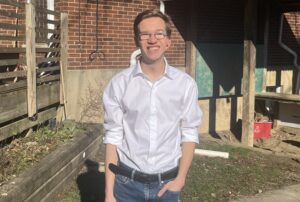
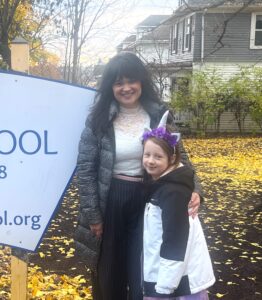
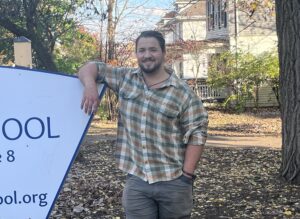 "When we place nature at the center of our community, we come to realize the true abundance of the world we live in. This school puts these seeds of hope in its students; it changes how they move through the world, and it changes the communities they enter for the better.”
"When we place nature at the center of our community, we come to realize the true abundance of the world we live in. This school puts these seeds of hope in its students; it changes how they move through the world, and it changes the communities they enter for the better.”